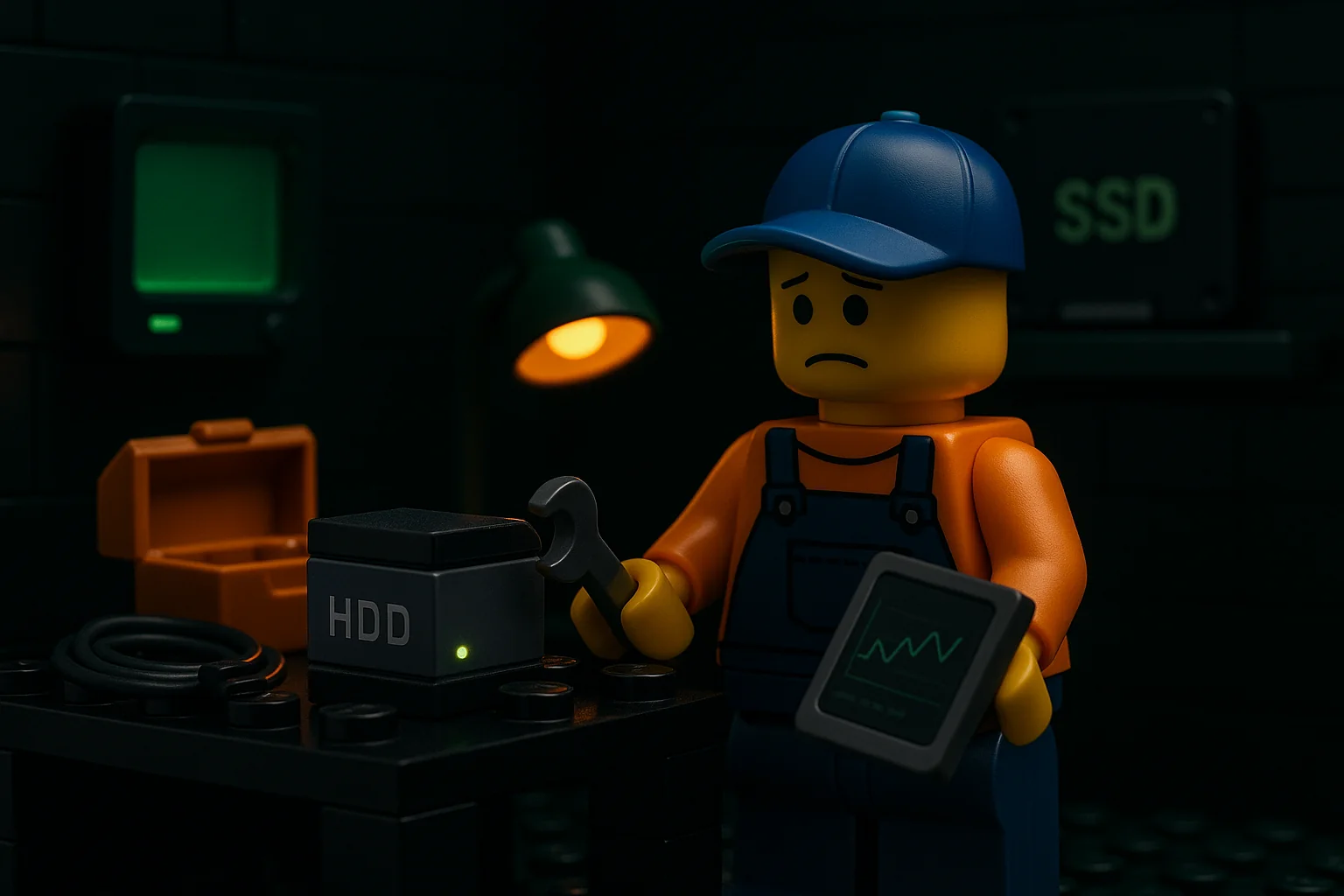Why do I hear a clicking sound from my hard drive?

Table of Contents
This one deserves caution:
- Read/write head issues or power instability can cause clicking.
- Failing HDD firmware or bad sectors causing repeated retries.
- Loose or damaged SATA/power cables.
Back up first if it still reads. Continued use can make recovery harder.
Need help? Check here: /services/repairs/
What it might be (likely causes)#
Head seek/retry loop
The actuator clicks as it repeatedly tries (and fails) to lock onto tracks. This is classic dying‑HDD behavior. Background: Hard disk drive failure, Head crashPower instability
Weak or splitters on the SATA power line can cause the drive to spin up, drop out, and re‑spin—each cycle can click.Cable/connector trouble
A flaky SATA data cable or loose connector causes resets and retries that sound like irregular clicking.Bad sectors piling up
The firmware remaps failing sectors until it can’t, producing long stalls and audible recalibration clicks. See aging patterns: /posts/top-problems-10-year-old-pcs/
Do this first (low‑risk)#
Stop any heavy tasks
Pause downloads, game installs, and backups to minimize reads/writes.Back up the irreplaceable now
Copy family photos, documents, and work files first. If the drive is still readable, prioritize the most important folders. Backup workflow: /posts/simple-data-backups-without-cloud/Check cables and power (desktop)
Power down, unplug, and reseat the SATA data and power connectors. Avoid Y‑splitters if you can; use a direct PSU lead. If you have a spare known‑good SATA cable, swap it.Try a different port/enclosure
Move the cable to another SATA port or test in a USB SATA dock to rule out a bad port on the motherboard.Collect SMART health (read‑only)
If you have a trusted tool, read SMART attributes to confirm reallocated/pending sectors and error counts. If the tool freezes or the drive drops during the read, stop and go back to copying only the most important files. Overview: S.M.A.R.T.
Things to avoid (to protect data)#
- Don’t run long surface scans (
/rscans or multi‑hour diagnostics) on a clicking drive—they stress the heads and can finish it off. - Don’t keep rebooting hoping it will clear; each spin‑up is wear.
- Don’t freeze/heat/knock the drive—old myths, real risk.
- Don’t open the drive outside a clean room.
Safer recovery strategy (home level)#
Copy easy wins first
Grab small, irreplaceable files before big media. If a folder hangs, skip it and come back later.Clone, don’t image (if it’s deteriorating quickly)
If the drive is degrading by the hour and you have a destination disk ready, a sector‑by‑sector clone to a healthy disk is safer than letting the source thrash. (Professional tools do this with error‑skipping and head cooling—DIY only if you’re comfortable and the data is already backed up elsewhere.)Move to SSD afterward
If this was your system drive, plan to migrate the OS to an SSD and retire the HDD. Prep and bootable‑USB notes: /posts/boot-from-usb-every-major-system/ and intake prep: /posts/prepare-for-computer-repair/
Patterns that narrow the cause#
- Regular rhythmic clicks + won’t mount → failing heads/servo; stop and consider professional recovery.
- Clicks only on heavy access; sometimes mounts → marginal power/cable or early bad‑sector stage—back up immediately.
- Stops clicking after cable/port swap → likely cable/port fault; still run a quick SMART read and plan replacement.
- Click with power cycles → PSU rail or splitter problem; move to a direct PSU lead.
When to pause and get hands‑on help#
- The drive disappears mid‑copy or stalls the whole system.
- SMART shows rapidly increasing Reallocated or Pending sectors.
- It’s mission‑critical data and you can’t risk DIY attempts.
Bench work lets us stabilize power, read SMART safely, and—if needed—clone with tools that minimize head thrash.
Insight#
Clicking is the drive’s way of saying “I can’t find home.” Each click is a retry, and each retry increases risk. Your job is to reduce stress and maximize salvage: copy what matters, once, with the fewest spins. After that, retire the drive. Storage is cheap; your data is not.
Need data triage, cloning, or a clean migration in Kirksville?
See /services/repairs/.